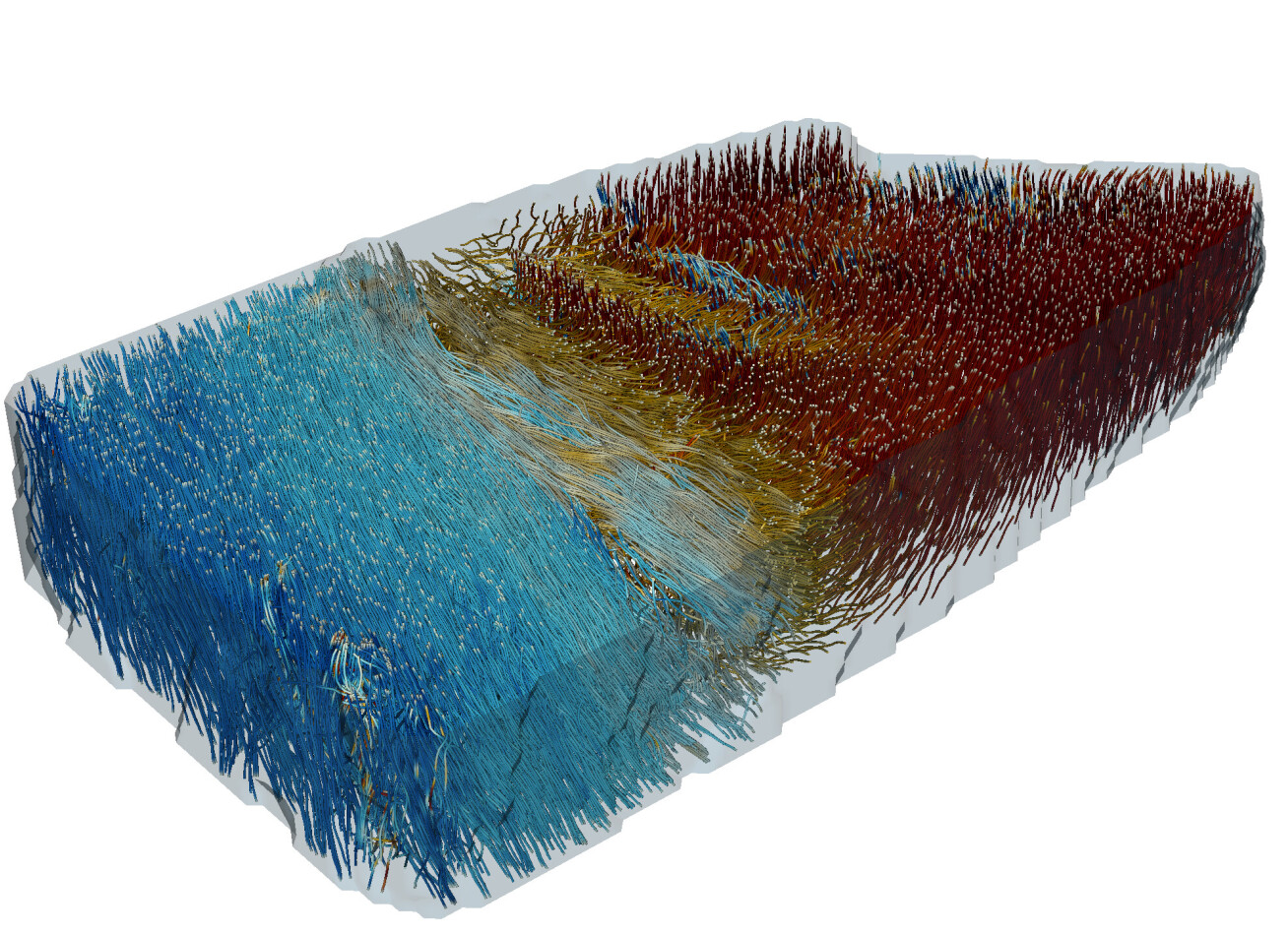Migraine research and beating human hearts: News from Imperial
Here’s a batch of fresh news and announcements from across Imperial.
From research to explain what causes a migrane, to funding that will allow researchers to deliver unprecedented imaging of the beating human heart, here is some quick-read news from across Imperial.
Why the sore head?
 Explaining what causes migraines has long been a headache for scientists. But new research co-led by Professor Paul Goldsmith from Imperial's Institute of Global Health Innovation, suggests migraines could be the brain’s attempt to optimise performance, particularly when it’s placed under extra demand.
Explaining what causes migraines has long been a headache for scientists. But new research co-led by Professor Paul Goldsmith from Imperial's Institute of Global Health Innovation, suggests migraines could be the brain’s attempt to optimise performance, particularly when it’s placed under extra demand.
Our brains make sophisticated predictions about the state of our bodies and how this is set to change in the future. When sensory inputs deviate from these predictions the brain increases their gain - turning up the volume - to try to bring things back into balance. While this process is usually successful (and unnoticeable), it can cause a runaway feedback loop, where other regions of the brain are knocked off kilter.
In a migraine, the increased gain is experienced as a heightened awareness of sensations and pain. Additionally, the ‘balancing system can be pushed too far and catastrophic failure can occur,' Professor Paul Goldsmith said.
His team suggests migraine may then even be a ‘defence’ rather than an ‘attack’ mechanism, providing the brain with a buffer by enforcing rest to ‘reset’ its regulatory system.
'We contend that migraine can be understood as the brain making itself more sensitive to stress temporarily to reduce stress overall,' he added.
Read the full paper in Neuroscience & Biobehavioral Reviews.
Heart funding

Funding has been awarded for Imperial researchers to deliver unprecedented imaging of the beating human heart.
The Chan Zuckerberg Initiative is supporting nine innovative projects visualising living biological systems deep within the body, at biological scales far beyond those accessible to conventional in vivo imaging methods.
Dr Sonia Nielles-Vallespin, who is leading the team at Imperial's National Heart and Lung Institute, will be looking at cellular-level non-invasive cardiac magnetic resonance. Dr Nielles-Vallespin hopes the work will lead to a fundamentally improved understanding of the microstructural dynamics underlying myocardial contraction and deformation, which will in turn 'drive innovation in diagnosis and prognostication of cardiac disease.'
Despite centuries of research, fundamental questions about human cardiac microstructure and its link to heart function remain unanswered. This means there is a critical gap in our understanding of cardiac health and disease. To gain a deeper understanding of the mechanistic basis of human cardiac contraction in-vivo imaging at a range of scales is needed. At present only in-vivo Diffusion Tensor Cardiovascular Magnetic Resonance (DT-CMR), which measures the diffusion of water within the myocardial microstructure, can non-invasively assess myocardial microstructural dynamics in humans. However it cannot investigate microstructures at the 100um scale, something this new research will enable us to do.
Designing sustainable catalysts
 Catalysts support many crucial chemical reactions for our society, and researchers are working on ways to make them more sustainable. For molecular catalysts that rely on electron transfer, a promising way is to anchor these to surfaces, which generates less waste, requires milder reaction conditions, and is industrially scalable. However, the mechanics of these catalysts are still poorly understood, hindering rational design of new catalysts.
Catalysts support many crucial chemical reactions for our society, and researchers are working on ways to make them more sustainable. For molecular catalysts that rely on electron transfer, a promising way is to anchor these to surfaces, which generates less waste, requires milder reaction conditions, and is industrially scalable. However, the mechanics of these catalysts are still poorly understood, hindering rational design of new catalysts.
During many catalytic reactions that involve electron transfer, ‘radical’ intermediates are produced – temporary stages in the reaction – which can be key to studying the catalytic mechanism. Now, a team led by Dr Maxie Roessler from the Department of Chemistry at Imperial has combined two techniques called film electrochemistry (FE) and electron paramagnetic resonance (EPR) to track these radicals in real time. They demonstrated this by tracking an alcohol oxidation reaction by a surface-immobilised nitroxide catalyst.
The tracking revealed the key role of electron transfer from the surface of the electrode to the catalyst. This process was found to be surprisingly slow, suggesting that the design of future catalysts will need to focus on achieving efficient electron transfer to and from the electrode. Beyond catalysis, the new operando FE-EPR technique could be used in the real-time investigation of radical intermediates of numerous surface-bound processes that involve electron transfer reactions.
Read the full paper in Nature Chemistry.
Research Professorship

Professor Bill Rutherford, Chair in Biochemistry of Solar Energy in the Department of Life Sciences, has been awarded a Royal Society Research Professorship for his exceptional research on photosynthesis.
The Royal Society’s premier research award will provide Professor Rutherford with long-term support to focus on ambitious and original research.
Professor Rutherford explores the structure and function of photosynthetic reaction centres – the key components for the conversion of light into energy to power life – and its potential to improve the efficiency of solar cells and crop productivity. He will analyse ways to improve photosynthetic efficiency with potential benefits for food production and (photo) biotechnologies.
On receiving the award, Professor Rutherford said: "I am happy, honoured and relieved to be awarded a Royal Society Research Professorship. This success owes a lot to my excellent coworkers, post-docs, students and network of collaborators here and abroad.
The professorship will provide me with the time to think and the resources to work with my team on our favourite research projects: the light-driven enzymes of photosynthesis - photosystems. These chlorophyll-containing proteins put energy into the biosphere and oxygen into the atmosphere."
All image credit unless otherwise stated: Shutterstock
 Want to be kept up to date on news at Imperial? Sign up for our free quick-read daily e-newsletter, Imperial Today.
Want to be kept up to date on news at Imperial? Sign up for our free quick-read daily e-newsletter, Imperial Today.
Article text (excluding photos or graphics) © Imperial College London.
Photos and graphics subject to third party copyright used with permission or © Imperial College London.